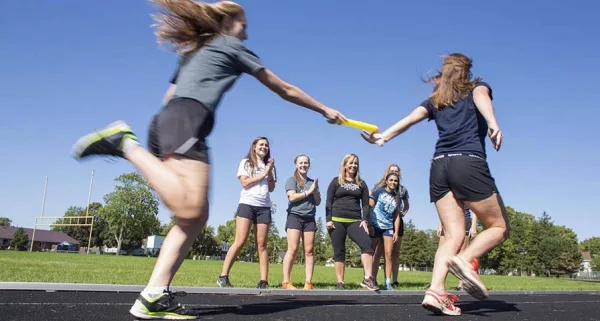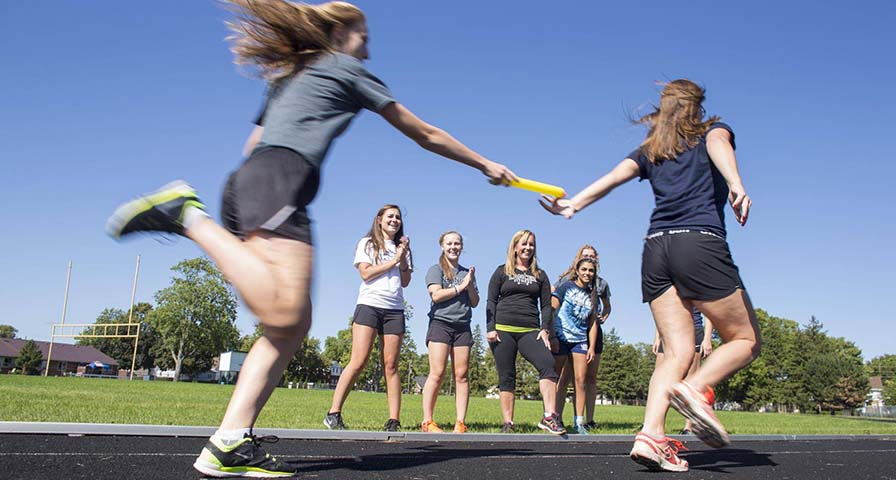Originally published July 14, 2022 by Troy Media.
By Ken Reed
Josh Fullan is the executive director of Maximum City, a national education and engagement organization based in Toronto. He recently wrote a compelling opinion piece on the need for more physical education in schools for The Globe and Mail.
Fullan outlines the physical, mental and academic benefits of regular exercise. He emphasizes the academic and mental health benefits that people don’t typically associate with physical education and exercise.

“There is a false paradigm here, however: that gym class and good grades are mutually antagonistic,” writes Fullan. “In fact, research has shown that physical activity is a ballast for academic performance, not an anchor. The Naperville Zero Hour study, highlighted in Harvard psychiatrist John Ratey’s book Spark, details how the Illinois school district leveraged early morning aerobic exercise into top academic test scores, not to mention happier, more engaged students.”
Fullan also noted the benefits of physical activity for addressing the mental health issues today’s young people are dealing with, including those due to the restrictions and challenges resulting from the COVID-19 pandemic.
“Physical activity has been shown to increase a sense of self-efficacy and reduce depression, anxiety, stress, loss of control – the very challenges many young folks are struggling with,” wrote Fullan.
Much of the historical resistance to daily physical education in schools comes from the perception – too often true, unfortunately – that phys-ed teachers only grade athletic ability. Students who are less gifted athletically tend to avoid physical education like the plague.
The same is true for students with body image or self-esteem issues. Some students are fearful that a low grade in phys-ed might negatively impact their grade point average and hurt their chances of getting into the college of their choice. But as Fullan points out, these concerns can be alleviated to a large degree by removing the stakes in phys-ed or, ideally, grading – as they did in the Naperville study – based on effort (e.g., achieving and maintaining a target heart rate), not athletic ability.
In addition, school-based physical education needs to focus on teaching fitness and lifetime physical activities and sports, not team sports. When team sports are part of the curriculum, they should involve small-sided teams, such as three-on-three soccer and three-on-three basketball. This helps ensure that all students touch the ball and that the more athletic students don’t dominate the activity.
But increasing movement in schools shouldn’t be solely left to phys-ed teachers. Movement can creatively be incorporated into a variety of classes. Recess time at the elementary level is important, as are before- and after-school intramural sports programs and physical activities. And parents need to be encouraged to promote physical activity at home.
Young people who are active through high school are more active than their less-active school peers through their adult years. Active children tend to turn into active adults.
“Research has shown that lack of physical activity may be a more significant factor in contributing to childhood obesity than even bad diet,” according to former National Basketball Association player, U.S. congressman and current board chairman of the United States’ National Fitness Foundation Tom McMillen. “Other research in adults indicates that poor fitness is a more significant predictor of death than obesity generally, diabetes and other causes. In other words, the most important thing we can do for the health of our kids is to get them up off the couch.”
Sadly, at a time when childhood overweight and obesity levels are up among young people, physical education classes, recesses and intramural sports programs are being cut in schools across Canada and the United States.
That trend needs to be reversed. The research is clear: students receiving daily physical education and meeting daily physical activity requirements are healthier, perform better academically and have fewer emotional and behavioural problems.
Ken Reed is sports policy director for League of Fans (leagueoffans.org), a sports reform project. He is the author of The Sports Reformers, Ego vs. Soul in Sports, and How We Can Save Sports.
Make the IHT ZONE heart rate monitor part of your School's Student Wellness Program




